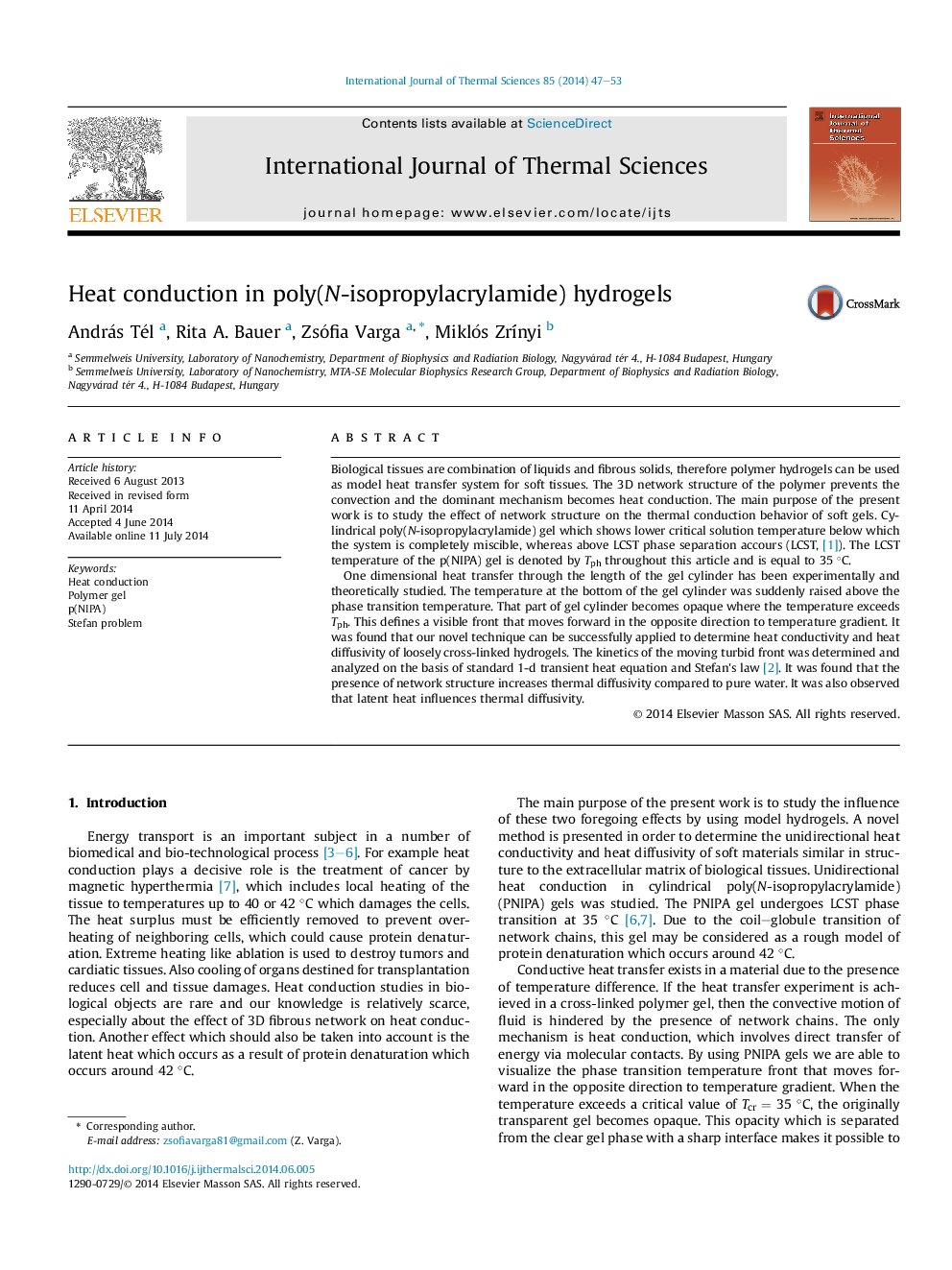| Article ID | Journal | Published Year | Pages | File Type |
|---|---|---|---|---|
| 668226 | International Journal of Thermal Sciences | 2014 | 7 Pages |
•Novel technique was used to determine heat conductivity and diffusivity of hydrogels.•Moving temperature front was analyzed on the basis of Fourier's and Stefan's law.•The network structure increases the thermal diffusivity compared to the pure water.
Biological tissues are combination of liquids and fibrous solids, therefore polymer hydrogels can be used as model heat transfer system for soft tissues. The 3D network structure of the polymer prevents the convection and the dominant mechanism becomes heat conduction. The main purpose of the present work is to study the effect of network structure on the thermal conduction behavior of soft gels. Cylindrical poly(N-isopropylacrylamide) gel which shows lower critical solution temperature below which the system is completely miscible, whereas above LCST phase separation accours (LCST, [1]). The LCST temperature of the p(NIPA) gel is denoted by Tph throughout this article and is equal to 35 °C.One dimensional heat transfer through the length of the gel cylinder has been experimentally and theoretically studied. The temperature at the bottom of the gel cylinder was suddenly raised above the phase transition temperature. That part of gel cylinder becomes opaque where the temperature exceeds Tph. This defines a visible front that moves forward in the opposite direction to temperature gradient. It was found that our novel technique can be successfully applied to determine heat conductivity and heat diffusivity of loosely cross-linked hydrogels. The kinetics of the moving turbid front was determined and analyzed on the basis of standard 1-d transient heat equation and Stefan's law [2]. It was found that the presence of network structure increases thermal diffusivity compared to pure water. It was also observed that latent heat influences thermal diffusivity.
